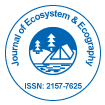Notre groupe organise plus de 3 000 séries de conférences Événements chaque année aux États-Unis, en Europe et en Europe. Asie avec le soutien de 1 000 autres Sociétés scientifiques et publie plus de 700 Open Access Revues qui contiennent plus de 50 000 personnalités éminentes, des scientifiques réputés en tant que membres du comité de rédaction.
Les revues en libre accès gagnent plus de lecteurs et de citations
700 revues et 15 000 000 de lecteurs Chaque revue attire plus de 25 000 lecteurs
Indexé dans
- Indice source CAS (CASSI)
- Index Copernic
- Google Scholar
- Sherpa Roméo
- Accès en ligne à la recherche en environnement (OARE)
- Ouvrir la porte J
- JournalSeek de génamique
- Annuaire des périodiques d'Ulrich
- Accès à la recherche mondiale en ligne sur l'agriculture (AGORA)
- Bibliothèque de revues électroniques
- Recherche de référence
- Université Hamdard
- EBSCO AZ
- OCLC-WorldCat
- Catalogue en ligne SWB
- Bibliothèque virtuelle de biologie (vifabio)
- Publons
- Fondation genevoise pour l'enseignement et la recherche médicale
- Euro Pub
Liens utiles
Revues en libre accès
Partager cette page
Abstrait
Leaf Photosynthesis and Plant Competitive Success in a Mixed-grass Prairie: With Reference to Exotic Grasses Invasion
Dong X, Patton J, Gu L, Wang J and Patton B
The widespread invasion of exotic cool-season grasses in mixed-grass rangeland is diminishing the hope of bringing back the natural native plant communities. However, ecophysiological mechanisms explaining the relative competitiveness of these invasive grasses over the native species generally are lacking. We used experimental data collected in south-central North Dakota, USA to address this issue. Photosynthetic potential was obtained from the net assimilation (A) vs. internal CO2 (Ci) response curves from plants grown in a greenhouse. Plant success was defined as the average frequency measured over 25 years (1988 to 2012) on overflow range sites across five levels of grazing intensity. Also, estimated leaf area index of individual species under field conditions was used to indicate plant success. The correlation between photosynthetic potential based on A/Ci curves and plant frequency was negative. The correlation between leaf photosynthesis and plant success (defined as leaf area within a unit land area) was also negative, although statistically weak. These results suggest that the two cool-season grasses, Poa pratensis and Bromus inermis, do not rely on superior leaf-level photosynthesis for competitive success. Instead, some other traits, such as early and late-season growth, may be more important for them to gain dominance in the mixed-grass prairie. We propose that the negative photosynthesis-frequency relation as observed in this study results from a strong competition for limited soil nutrients in the mixed-grass prairie. It has implications for the stability and productivity of the grassland under various human disruptions influencing the soil nutrient status.
Revues par sujet
- Agriculture et Aquaculture
- Biochimie
- Chimie
- Food & Nutrition
- Génétique et biologie moléculaire
- Géologie et sciences de la Terre
- Immunologie et microbiologie
- Ingénierie
- La science des matériaux
- Le physique
- Science générale
- Sciences cliniques
- Sciences environnementales
- Sciences médicales
- Sciences pharmaceutiques
- Sciences sociales et politiques
- Sciences vétérinaires
- Soins infirmiers et soins de santé
Revues cliniques et médicales
- Allaitement
- Anesthésiologie
- Biologie moléculaire
- Cardiologie
- Chirurgie
- Dentisterie
- Dermatologie
- Diabète et endocrinologie
- Gastro-entérologie
- Immunologie
- La génétique
- Maladies infectieuses
- Médecine
- Microbiologie
- Neurologie
- Oncologie
- Ophtalmologie
- Pédiatrie
- Recherche clinique
- Soins de santé
- Toxicologie

 English
English  Spanish
Spanish  Chinese
Chinese  Russian
Russian  German
German  Japanese
Japanese  Portuguese
Portuguese  Hindi
Hindi